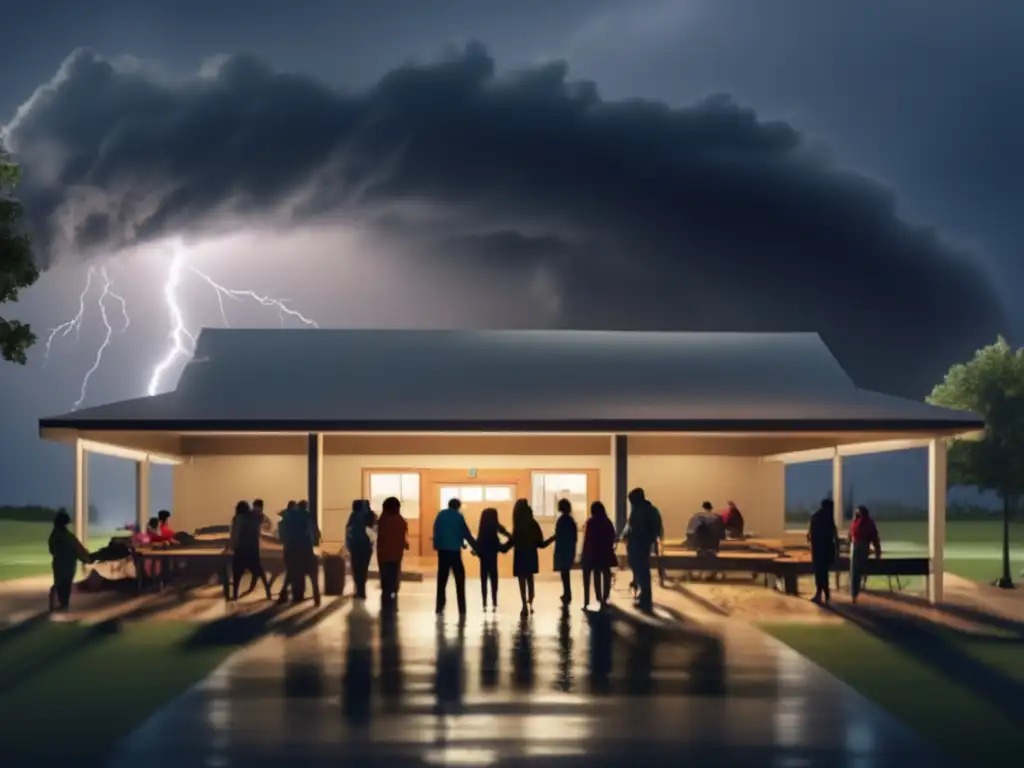The Environmental Impact Of Hurricanes And What You Can Do

The Environmental Impact of Hurricanes and What You Can Do
Introduction
Hurricanes are not only some of the most destructive natural disasters in the world, but they also have a serious environmental impact. These storms can change the landscape, displace wildlife, and harm ecosystems. It is crucial to understand the environmental impact of hurricanes and take action to mitigate it.
The Effects of Hurricane on the Environment

Impact on Landscapes
Hurricanes can alter the physical landscape of the coastal areas they affect. They can erode beaches, destroy dunes and reshape the coastline. Moreover, the massive amount of rainfall associated with these storms can cause landslides, mudslides, and even floods that can dramatically alter the topography of the affected area. This can be seen in recent examples like Hurricane Harvey in 2017, which caused severe flooding in Houston, Texas, and the surrounding areas, affecting millions of people.
Impact on Water Quality
Storm surges during hurricanes can cause seawater to penetrate inland, which can bring saltwater into freshwater sources and vice versa. This can result in pollution and salinization, ultimately negatively impacting local ecosystems and reducing the availability of potable water for human consumption. Additionally, the excessive rainfall during hurricane seasons carries pollutants from urban and agricultural areas, floods sewage systems, and eventually contaminates rivers and oceans.
Impact on Wildlife
Hurricanes can displace wildlife and cause significant damage to ecosystems. For instance, many kinds of turtles lay their eggs on the beaches where they were born and return to the sea. If the beaches are destroyed due to a storm, turtles cannot lay eggs and continue their life cycle. The same is true for seabirds and other creatures that rely on coastal habitats for breeding. Hurricanes can also change the timing of animal migrations, which can affect entire food chains in oceanic ecosystems.
What Can We Do?

Reduce Carbon Footprint
The impact of hurricanes on the environment and vice versa is closely linked to climate change. The excess greenhouse gases produced by human activities are causing global temperatures to rise, thus contributing to more frequent and severe weather events like hurricanes. Therefore, reducing carbon emissions is one of the most crucial steps that can be taken to prevent future hurricanes and reduce their impacts. This includes actions such as driving less, consuming fewer energy resources, and using public transportation can help reduce individual carbon footprints, ultimately promoting a more sustainable lifestyle.
Prepare for Emergencies
Preparation to minimize the environmental effects of hurricanes should start well before the storm arrives. It is essential to have an emergency plan in place that will help protect humans, animals, and the environment from the hurricane’s destructive effects. For example, keeping sandbags ready can protect homes from flooding, and removing outdoor furniture from high wind areas can help prevent debris from flying and causing damage to buildings or people. Ensuring that emergency services know the local environment’s unique features, such as sensitive ecosystems, also enables them to better prepare and respond during the storm's aftermath.
Participate in Community Efforts
Community Efforts provide valuable help in restoring environmental damages caused by hurricanes. People can participate in clean-up and rebuilding efforts after an event, help establish community gardens and other green spaces where nature can rebound. Additionally, joining local environmental groups can also help create awareness about environmental issues and promote initiatives for environmental protection.
Frequently Asked Questions

-
How do hurricanes affect the environment?
Hurricanes can alter landscapes, harm ecosystems, and displace wildlife. They can also impact water quality and create pollution.
-
Can we prevent hurricanes from happening?
No, hurricanes are natural phenomena; however, reducing environmental pollution and greenhouse gas emissions is crucial to preventing their frequency and severity.
-
What can we do to help the environment during a hurricane?
Be prepared with an emergency plan and participate in clean-up efforts within local communities.
-
Are there any long-term effects of hurricanes on the environment?
Yes, hurricanes can have lasting impacts on the environment, specifically related to land and water pollution as well as altering flora and fauna distribution patterns.
-
Can hurricanes disrupt climate patterns and contribute to global warming?
Yes, hurricanes can cause flooding, which can lead to the release of carbon dioxide trapped in soil or tree roots. Additionally, the destruction of trees and plants, which absorb carbon dioxide and other greenhouse gases, contributes to global warming as more greenhouse gases such as carbon dioxide are released into the atmosphere.
Conclusion
The environmental impact of hurricanes can have significant and lasting effects on the world around us. Through reducing individual carbon footprints, preparing for emergencies, and participating in community efforts, we can mitigate these impacts and work towards a more sustainable future. It is essential to safeguard our environment, given that we depend on it for survival in many ways.
By taking action now, we can create more resilient communities that can cope with the challenges of this century, including hurricanes and other natural disasters.
Additional Resources

- Environmental Impacts of Hurricanes: EPA
- The National Wildlife Federation's page on Hurricane Impacts
- The Nature Conservancy's Hurricane Resource Center
 Navigating Roads After A Hurricane: Safety Tips
Navigating Roads After A Hurricane: Safety Tips The Vital Role Of Community Centers During Hurricanes
The Vital Role Of Community Centers During Hurricanes Protecting Your Business During A Hurricane
Protecting Your Business During A HurricaneIf you want to discover more articles similar to The Environmental Impact Of Hurricanes And What You Can Do, you can visit the During the hurricane: category.
Leave a Reply

Articulos relacionados: